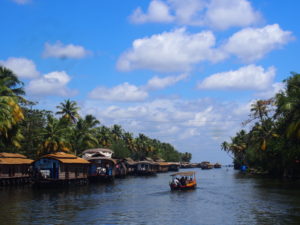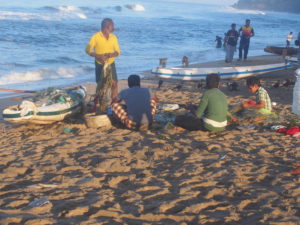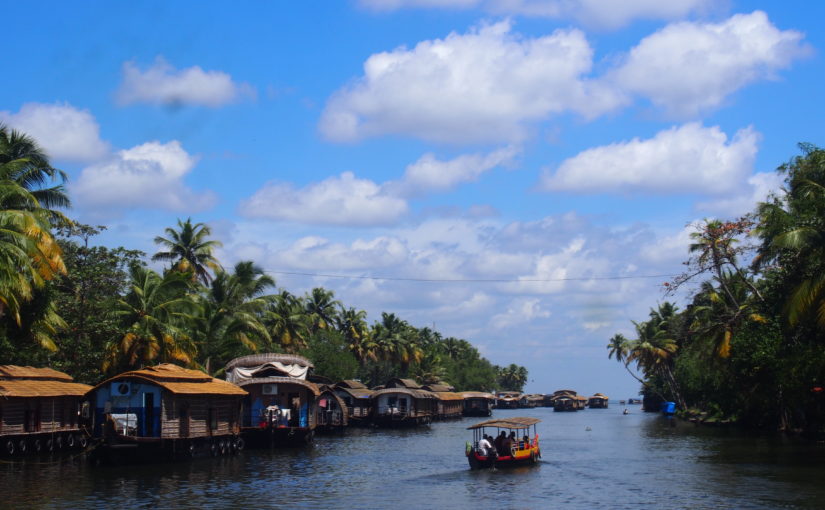Kerala might arguably be the most popular tourist attraction in South India. Nicknamed “God’s Own Country,” Kerala is widely known for its gorgeous Arabian Sea backwaters with its houseboats and as the home of the best spices in the world. While these things are worthy of praise, there is so much more to this culturally diverse southern state. From cuisine, to scenery, to history, Kerala deserves its spot on the “must see in India” list.

As a proud foodie, I made it a point to enjoy as much fresh local seafood as possible, and luckily the possibilities were endless (I still remember the seafood masala with coconut naan I had while watching the sunset over the sea). The restaurants along the beach near my hotel purchased much of their seafood directly from the fisherman who pulled their boats laden with netted fish and crabs up on the beach.
Another food I sought out while in Kerala was a cookie, achappam, which speaks to Kerala’s unique synthesis and history. These crispy rose-shaped cookies are made with coconut milk, rice flour, and sesame seeds as the main ingredients. What makes it so interesting, however, is its striking resemblance to the Scandinavian rosettes I grew up making with my grandmother. How could this be? After doing some research I came up with a probable answer.
The Dutch once held Kerala as a spice trading port before the Portuguese drove them out. The original rosette cookie recipe transferred from Sweden to Denmark through trade, and they brought the recipe to the port city of Kerala.
From there, the locals probably tweaked the recipe to make something unique and made from easily available ingredients. A similar cookie also shows up in Sri Lanka, which was another trade center for the Dutch in the past, further prompting my conclusion.
This sweet attests to the synthesis of cultures in Kerala, but the most interesting facet of Kerala’s identity is its politics.
Believe it or not, Kerala is Communist party controlled by choice. As a matter of fact, it is a source of pride for many Keralans, as the perception and practice of communism in the state is very different than the common conception of an evil, oppressive system Americans are accustomed to seeing portrayed.
The main push for Keralans to elect the communist party into power was to enact beneficial land reforms. Whatever the reason, I will admit it was strange for me to see open displays of communist pride.
However, there was much more to see. Kerala is known for its relaxing atmosphere due in large part to the breathtaking scenery.
Kerala is blanketed in dense teakwood forests and coconut groves tangled together by innumerable peppercorn creepers. Add in rolling hillsides, miles of coastal beaches and backwaters and you have the perfect spot for vacationers everywhere.

Kerala offers the opportunity for leisure and time to soak up the potent southern sun whether on a white sandy beach or aboard a traditional houseboat.
While it is tempting to spend all your time lounging, it is worth tearing yourself away from the scenery periodically to explore more of what Kerala has to offer. What you find may surprise you in the best of ways.
